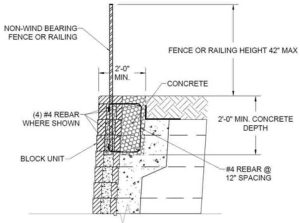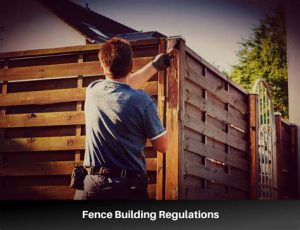Discover essential steps for navigating local regulations, permit applications, zoning requirements, documentation, and the approval process for a smooth project experience.Installing a fence can enhance your property’s aesthetics, increase privacy, and provide security. However, before diving into this DIY project, it’s crucial to understand the various permit requirements that vary from one location to another. Navigating the world of local regulations can be daunting, but with the right guidance, you can seamlessly transition from planning to execution. This blog post will break down the process into manageable steps, starting with understanding local regulations and required permits, to outlining the application process and specific zoning requirements. By preparing the necessary documentation and learning how to navigate the approval process, you’ll be well-equipped to tackle your fence installation with confidence. Let’s get started on transforming your outdoor space while ensuring compliance with local laws!
Understanding local regulations
When embarking on a DIY fence installation project, it is essential to start with a solid understanding of your area’s local regulations. Different states, counties, and cities have their own laws governing fencing, which can include height restrictions, style guidelines, and material specifications. Failing to adhere to these regulations can lead to fines or even the removal of your newly installed fence.
- Height Restrictions: Many jurisdictions have specific regulations on how tall your fence can be. Typically, front yard fences are limited in height compared to those in backyards.
- Property Line Acknowledgment: Understand where your property lines are located. It is critical to avoid building on your neighbor’s property or the communal space.
- Material Limitations: Some areas may have restrictions on the types of materials that can be used for a fence. Research whether you can build with wood, vinyl, metal, or other materials.
Before proceeding with your fencing project, it’s advisable to contact your local building department or zoning office. They can provide you with the most accurate and up-to-date information regarding the regulations that you must follow. Taking this step ensures that your DIY fence installation is both successful and compliant with local laws.
Researching permit application process
When it comes to DIY fence installation, understanding the permit application process is crucial. Each locality has its own set of regulations and requirements that you must adhere to before beginning your project. Failing to obtain the necessary permits can lead to fines or even having to dismantle your newly installed fence.
The first step in researching the permit application process is to visit your local government’s website. Most municipalities provide a comprehensive overview of the permitting procedures for various home improvement projects, including fencing. Make sure to look for sections that pertain specifically to zoning laws and property lines.
Additionally, it can be beneficial to reach out to local officials or zoning boards directly. They can give you insight into the types of permits you may need and any documentation required. It’s also a good opportunity to ask about any specific zoning requirements that might affect your DIY fence installation.
Meeting specific zoning requirements
When you’re planning a DIY fence installation, one of the most critical steps is meeting specific zoning requirements. These regulations vary by municipality, and they determine what type of fence you are permitted to build, where you can place it, and how tall it can be. Understanding these requirements is essential to avoid potential penalties or having to remove your fence after installation.
To get started, you should consult your local zoning ordinance, which typically outlines all regulations related to fences.
- Height limits – Most areas have height restrictions that dictate how tall your fence can be. Common limits range from 4 to 6 feet, depending on the zoning category.
- Material restrictions – Certain materials may not be allowed in specific zones. For instance, barbed wire or electric fences may be prohibited in residential areas.
- Setback requirements – Some local laws require fences to be a certain distance from the property line. This ensures adequate space for maintenance and avoids disputes with neighbors.
Furthermore, it’s advisable to check if the property is located in a homeowners’ association (HOA) area. HOAs often have their own set of zoning requirements that go beyond local regulations. Failing to comply with these community standards could result in fines or mandates to modify or remove your fence.
In summary, before you begin your DIY fence installation, ensure that you have thoroughly researched and understood the zoning requirements in your area.
Preparing necessary documentation
When it comes to DIY fence installation, one of the critical steps is preparing the necessary documentation. This process may seem daunting, but with a clear understanding of what’s required, you can navigate it with ease.
- Property Survey – A professional survey can help delineate property lines.
- Site Plan – Outline where the fence will be placed in relation to existing structures and landmarks.
- Fence Specifications – Detailing the materials, height, and style of your planned fence.
- Permit Application – Complete and accurate forms tailored to your local regulations.
It’s essential to check your local building codes and ordinances to ensure that your documentation meets all required guidelines. Oftentimes, communities will have specific forms that need to be submitted alongside your application for permits.
In some cases, you may also need to provide a photographic assessment of your property, showcasing the area where the fence will be constructed. This can help ease any concerns from zoning officials and provide context for your project proposal.
Remember, the more thorough and organized your documentation is, the smoother the process will be when seeking approval for your fence installation. Proper preparation can save time and potentially costs associated with reapplication or revisions.
Navigating approval process with ease
Once you have completed the necessary steps for your DIY fence installation, navigating the approval process can seem daunting. However, understanding the steps involved will help ease your concerns and pave the way for a successful project.
The first step is to ensure that all your documentation is in order. This includes having your site plan, detailed drawings, and any applicable zoning permits. Depending on your locality, you may also need to provide proof of property lines to avoid disputes with neighbors.
After ensuring your documentation is complete, the next step is to schedule an appointment or submit your application to the local authorities responsible for fencing projects. It’s also wise to follow up regularly to check on the status of your application. Patience and persistence are key in this phase, as some jurisdictions may take longer than others to process your request.
| Step | Action |
|---|---|
| 1 | Gather your documentation. |
| 2 | Submit your application. |
| 3 | Follow up on your application status. |
Keep in mind that being proactive by communicating with local zoning boards or building departments may prove beneficial. Knowing who to contact and being polite in your inquiries can help expedite the process. Always remember, this is just a temporary phase before you can proceed with your fantastic DIY fence project!
Frequently Asked Questions
What are the typical permits required for DIY fence installation?
Typically, homeowners may need a building permit, zoning permit, and in some cases, a boundary survey permit. It’s essential to check local regulations.
How can I find out about specific fence regulations in my area?
You can check with your local city or county building department, or visit their website for information on fence regulations and permitting processes.
What are the consequences of not obtaining the necessary permits for fence installation?
Not obtaining required permits can lead to fines, forced removal of the fence, and complications with future property transactions.
Do property line disputes affect fence installation permits?
Yes, property line disputes can affect fence installation as local authorities may require proof of property boundaries before issuing a permit.
Is there a general guideline for fence height restrictions?
Yes, many municipalities have height restrictions for fences, often allowing front yard fences to be lower than those in the backyard. Local codes should be reviewed.
Can I install a fence without a permit if it’s just under a certain height?
In some areas, smaller fences may not require a permit; however, it’s crucial to verify local laws, as height allowances vary.
What information do I need to provide when applying for a fence permit?
Typically, you will need to provide a site plan, details about the proposed fence materials, dimensions, and the desired location on your property.





